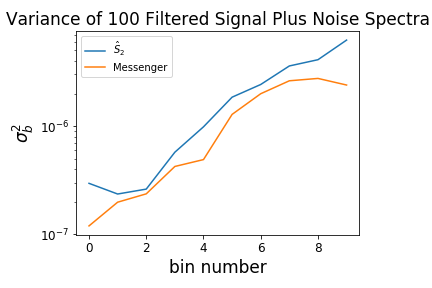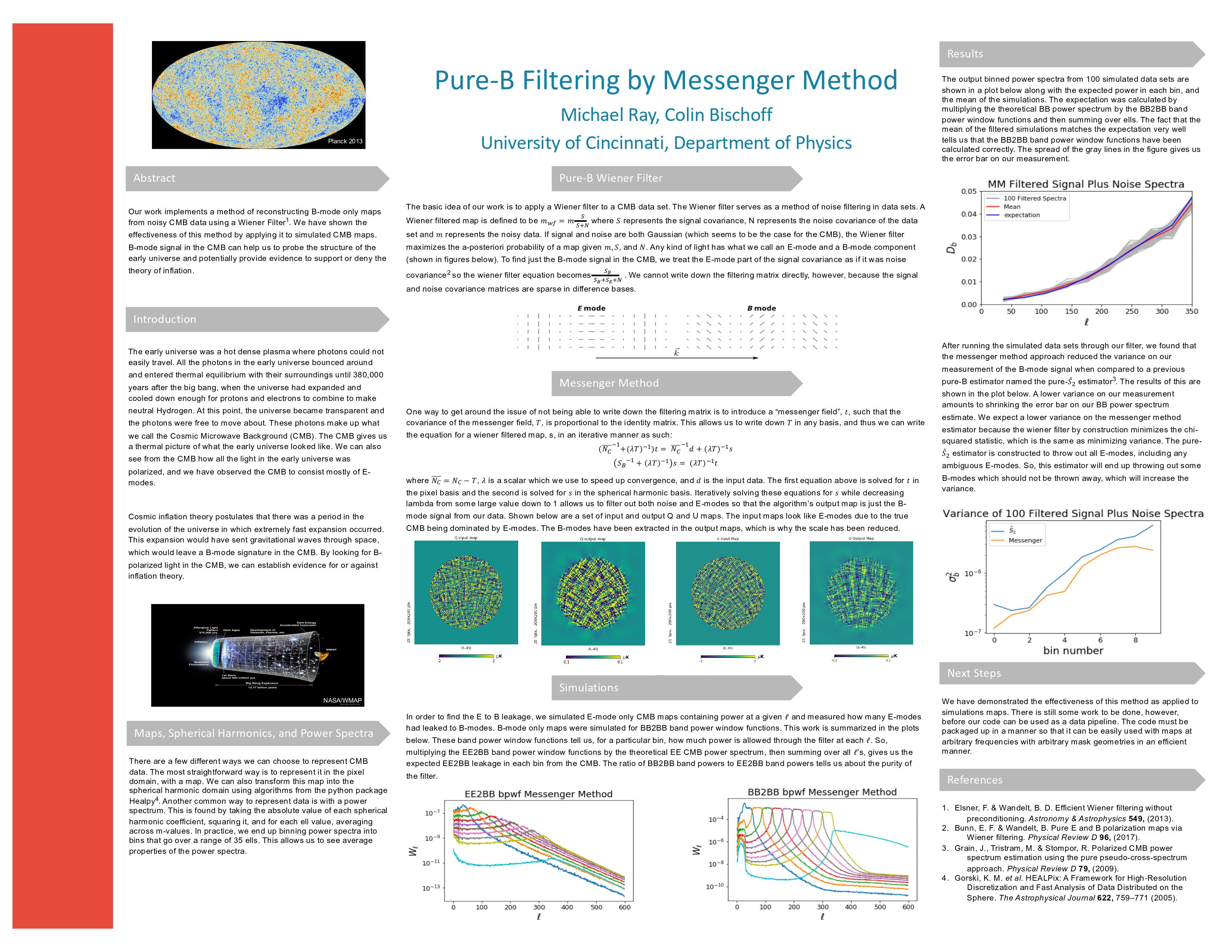Optimal Filtering of Early-Universe Light
Dr. Bischoff and I worked on developing a filter for CMB data which was meant to provide a reconstructed map of the CMB in which we only keep the divergence-free component of the light. These divergence-free components are called B-modes and they contain information about the early universe. Of particular interest to Dr. Bischoff's work is the fact that inflationary gravitational waves, if they existed in the early universe, would leave an imprint on the CMB in the form of B-modes. Therefore, obtaining an estimate of the B-mode signal is of importance for answering the question of whether inflation happened in our universe.
Unfortunately for us, the B-mode signal in the CMB is very faint compared to the E-mode signal (this is the curl-free component of the light). In addition, when telescopes (such as the BICEP/Keck array at the South Pole) are connected to the Earth, they only observe a portion of the sky. Measurements of polarized light are local measurements, though. Because of this, near the edge of the telecope's observing area, we cannot unambiguously distinguish between E-modes and B-modes. This is where our filter comes in. Our filter iteratively solves for the Wiener filter reconstruction of our data. That is, our filter outputs the map which minimizes chi-squared, or equivalently, the error in our measurement. You can see a demonstration of this in the figure below. It shows that our filter resulted in a lower variance (error bar size) when compared to the S2-hat estimator, which is currently used in the BICEP/Keck analysis pipeline.

The code developed for this project is open source and available on my GitHub account here. Also in that GitHub repository is a jupyter notebook which gives a demonstration of how the code works. A logbook posting in the CMBS-4 collaboration which was authored by Dr. Bischoff and myself can be found here. A poster for this work can be seen below.
